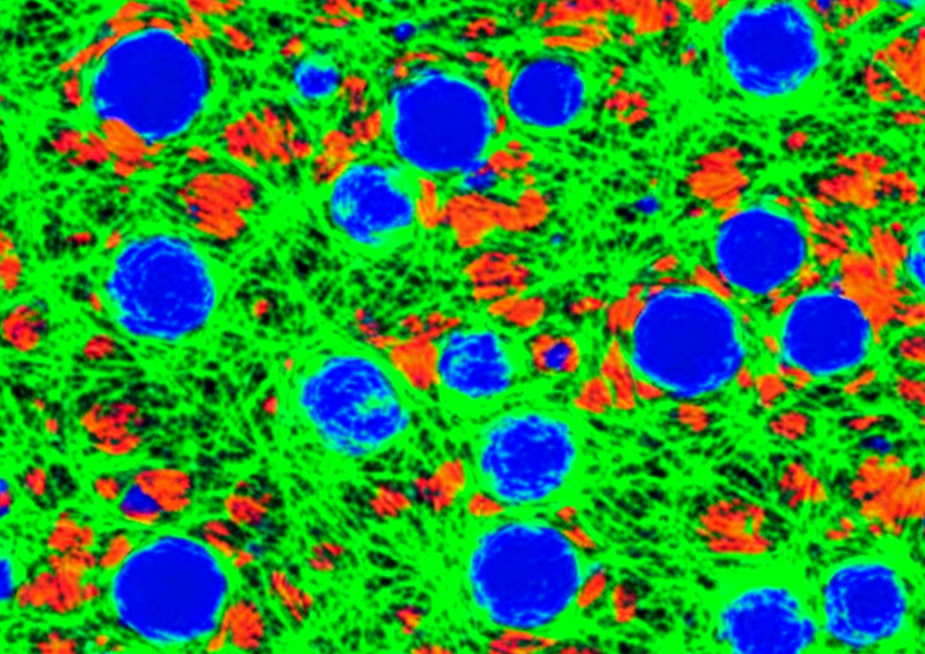
Osteosarcoma Cell Line Showdown: How to Choose Between Saos-2, U2OS, and MG-63
Introduction
In the fields of bone biology and cancer research, in vitro cell models are indispensable tools. Saos-2, U2OS, and MG-63 are three of the most common and extensively studied human osteosarcoma cell lines. However, despite originating from the same type of cancer, they exhibit significant differences in their biological characteristics. An inappropriate choice of cell model can lead to results that are difficult to interpret or even misleading. Therefore, a thorough understanding of the core differences in the genetic background and functional phenotype of these three cell lines is crucial before initiating a new study. This article aims to provide a clear decision-making guide for researchers through a direct comparison.
Genetic Background – p53 Status is Key
The tumor suppressor gene p53 is the "guardian of the genome," playing a central role in regulating the cell cycle, DNA repair, and apoptosis. The functional status of p53 is the most fundamental distinction among these three cell lines, directly dictating their applicability in cancer biology research.
1. Saos-2: p53-Null
The most striking genetic feature of Saos-2 cells is the homozygous deletion of the TP53 gene, meaning they express no p53 protein whatsoever. This "blank slate" background makes them an ideal platform for studying p53 function. Researchers can reintroduce wild-type or various mutant forms of p53 into Saos-2 cells via transfection to precisely dissect the function of a specific p53 mutation without interference from an endogenous protein. Furthermore, due to the lack of p53-mediated cell cycle checkpoints, Saos-2 is an excellent model for testing novel therapies (e.g., WEE1 inhibitors) that target p53-deficient tumors, which account for over 50% of all human cancers.
2. U2OS: p53 Wild-Type and Fully Functional
In direct contrast to Saos-2, U2OS cells express a fully functional, wild-type p53 protein. When subjected to DNA damage (e.g., from radiation or chemotherapy), U2OS cells exhibit a classic p53-dependent response, such as a G1 cell cycle arrest, which provides time for DNA repair. This makes U2OS the ideal model for studying the normal p53 signaling pathway, DNA damage responses, and for evaluating drugs or genes that may impact wild-type p53 function.
3. MG-63: p53 Wild-Type but Functionally Impaired
The p53 status of MG-63 is more complex. Although its TP53 gene sequence is wild-type, studies have shown that its p53 protein levels are low, and its downstream responses to DNA damage stimuli (such as the upregulation of p21) are significantly attenuated compared to U2OS. This may be due to defects in upstream regulatory pathways like ATM. Therefore, MG-63 can be considered a model for a partially dysregulated p53 pathway, suitable for studying the biology of tumors where p53 function is compromised despite the absence of a gene mutation.
Modeling an immature, pre-osteoblastic phenotype? MG-63 cells are the ideal model for studying bone development and early differentiation events. Click now>>
Osteogenic Differentiation Potential
As cells derived from a bone tumor, their ability to mimic normal osteoblasts is another critical distinguishing dimension, especially vital in bone tissue engineering and biomaterials research.
1. Saos-2: Strongest Osteogenic Differentiation Capacity
Among the three cell lines, Saos-2 displays the most mature osteoblast-like phenotype. It exhibits very high levels of endogenous alkaline phosphatase (ALP) activity—a key early marker of osteogenic differentiation. When treated with an osteogenic induction medium (typically containing β-glycerophosphate, ascorbic acid, and dexamethasone), Saos-2 cells efficiently form extensive calcified nodules, representing a mineralized matrix that can be stained with Alizarin Red S. This robust and consistent osteogenic capacity has established Saos-2 as the "gold standard" cell line for evaluating whether the surface of a novel orthopedic biomaterial can promote osseointegration and mineralization.
Ensure the clearest results for your bone tissue engineering research. Our Saos-2 cells provide robust mineralization for definitive and reliable positive data. Order Now>>
2. MG-63: Intermediate Osteogenic Differentiation Capacity
MG-63 also possesses osteogenic potential, with ALP activity that is higher than U2OS but significantly lower than Saos-2. It can also form mineralized nodules upon induction, but typically with less efficiency and to a lesser extent than Saos-2. Thus, MG-63 can be considered to represent a more immature, pre-osteoblastic phenotype.
3. U2OS: Weakest Osteogenic Differentiation Capacity
The osteogenic potential of U2OS is the weakest of the three. Its basal ALP activity is very low, and its ability to mineralize under standard osteogenic induction conditions is limited or negligible. This makes U2OS unsuitable as a model for studying bone formation or the osteoinductive properties of materials; its primary value remains in its wild-type p53 tumor biology characteristics.
Conclusion
In summary, there is no single "best" osteosarcoma cell line, only the "most appropriate" one. Researchers must clearly define their core scientific question at the outset of a project. If the study focuses on the function or loss of p53, then Saos-2 (p53-null) and U2OS (p53-wild-type) provide two functionally opposite endpoints. If the core of the research is bone formation and the osteogenic activity of biomaterials, then the robustly differentiating Saos-2 is the undisputed optimal choice. Only by making a precise, question-driven selection can researchers ensure a rational experimental design and obtain data that can be interpreted with clarity.
References
[1]Masuda, H., et al. (1987). Establishment of a human osteosarcoma cell line, Saos-2. Journal of Orthopaedic Research, 5(1), 83-91.
[2]Pontén, J., & Saksela, E. (1967). Two established human cell lines from osteosarcoma. International Journal of Cancer, 2(5), 434-447.
[3]Clover, J., & Gowen, M. (1994). A comparison of the effects of bone morphogenetic protein-2, prostanoids and retinoids on osteoblast-like cells in vitro. Biochimica et Biophysica Acta (BBA)-Molecular Cell Research, 1222(1), 75-82.
[4]Tsuchiya, T., et al. (2000). The p53 status of human osteosarcoma cell lines and its functional analysis. Journal of Cancer Research and Clinical Oncology, 126(10), 571-577.

